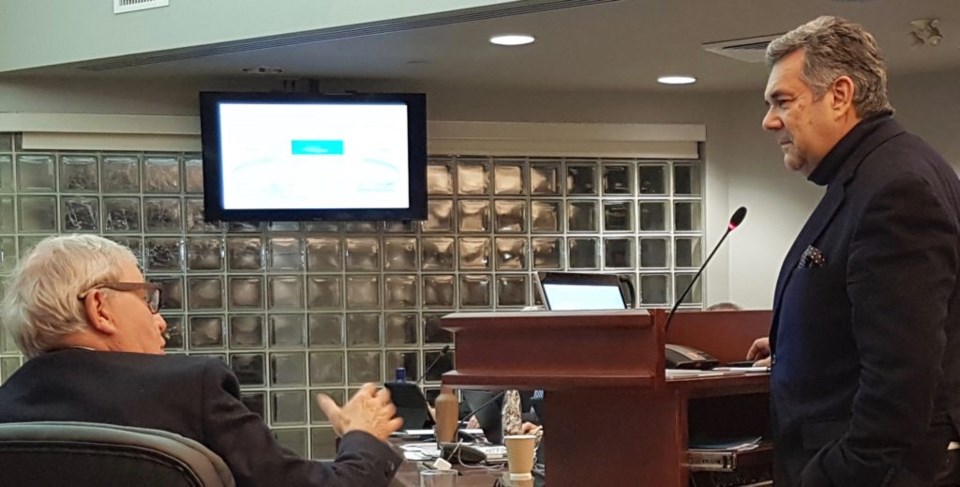
Eduardo Lafforgue, president of the Niagara-on-the-Lake Chamber of Commerce, would like residents to have a better understanding of the role of the chamber, and how it’s funded.
A misunderstanding of some residents’ views of the chamber became evident during recent discussions about a municipal accommodation tax, he says.
Some residents believe the chamber is funded by taxpayers, and that the implementation of the accommodation tax would lower residential taxes.
Lafforgue says the Chamber of Commerce is divided into two distinct entities, both non-profit, separately incorporated but to reduce costs, jointly managed. Tourism NOTL, tasked with tourism management and development, is a subsidiary of the chamber. The model offers a financial and management model that reduces overhead and effectively governs the two related activities, led by a volunteer board, to which Lafforgue is responsible.
Tourism NOTL is also the registered Destination Marketing Organization (DMO) for NOTL, committed to the promotion, responsible growth and sustainability of tourism.
While the chamber does receive a small portion of its $1 million budget from the town, it is in return for the Information Centre at the
Fort George bus parking lot, and also provides about $48,000 in sponsorship for the Icewine Festival, the Peach Celebration and the Candlelight Stroll, all events residents enjoy.
For example, the town contributes $6,000 for the Peach Celebration, which has a budget of $120,000.
Chamber membership brings in about eight per cent of revenue, business services to members about six per cent. Event revenues are the main source of income for the chamber and Tourism NOTL, making up more than half. Sponsorships and advertising on chamber media make up almost 30 per cent, with the town paying about seven per cent for the Information Centre.
“I want to be completely transparent, and I do everything I can to be transparent,” says Lafforgue.
The tourism strategy is expected to provide information about what visitors to NOTL contribute to the local economy, as well as the region, and the province, he said.
And that includes the many benefits to residents, including the events they enjoy: the Candlelight Stroll, the Peach Celebration, the Shades of Summer dinners, the Icewine Festival, all of which attract many locals; the selection of restaurants, the Shaw Festival, the wineries, also are enjoyed by residents, but would not survive without tourism, says Lafforgue.
“Residents are not paying more taxes because of these attractions but they are getting benefits just by being residents of NOTL,” he says.
Shades of Summer, a dinner organized by the chamber that this year was held in three different locations, was sold out an hour after tickets went on sale.
“Everyone who attended these dinners was delighted, and we were able to showcase Willowbank, the Pumphouse (Arts Centre) and the museum,” says Lafforgue.
If, when the tourism strategy is completed, and the recommendations for funding includes a municipal accommodation tax, for accomodations that are five rooms and more, the chamber’s Tourism NOTL, as the DMO, would likely be the recipient of 50 per cent of the tax collected, and would be the distributer of it for tourism marketing, says Lafforgue.
The town, however, could set up another entity to be the DMO and take on that task.
He believes residents feel the tax could offset municipal infrastructure projects they are paying for, but residents use all of the town infrastructure, whereas visitors benefit from only a small portion of roads and other improvement projects.
The tourism strategy would be expected to set out how the tax is to be spent, and which projects it would fund.
It is not expected to lower taxes for residents, and the portion of it distributed to tourism businesses through the DMO would be expected to market the town to visitors.
An important aspect of the tourism strategy, he added, is that an outside, objective moderator should be tasked with deciding who should come to the table to take part in the discussions, representing both businesses and residents, and that there be an opportunity for public discussions.
“This is to be a collaborative process. That is the key word — collaboration.”
He did not voice an opinion about a tax on accommodation, nor would he — his role is to represent the chamber’s board.
All he and others, such as Tim Jennings, CEO of the Shaw Festival, have asked for, he says, is that the tax on accomodations of five rooms or more be considered as part of an overall plan with the benefit of wide consultation with stakeholders and residents, along with the gathering and analysis of information that is necessary to make an informed decision.
That was the motion agreed to by council last month, with the expectation that it could take until 2022 to complete the study.